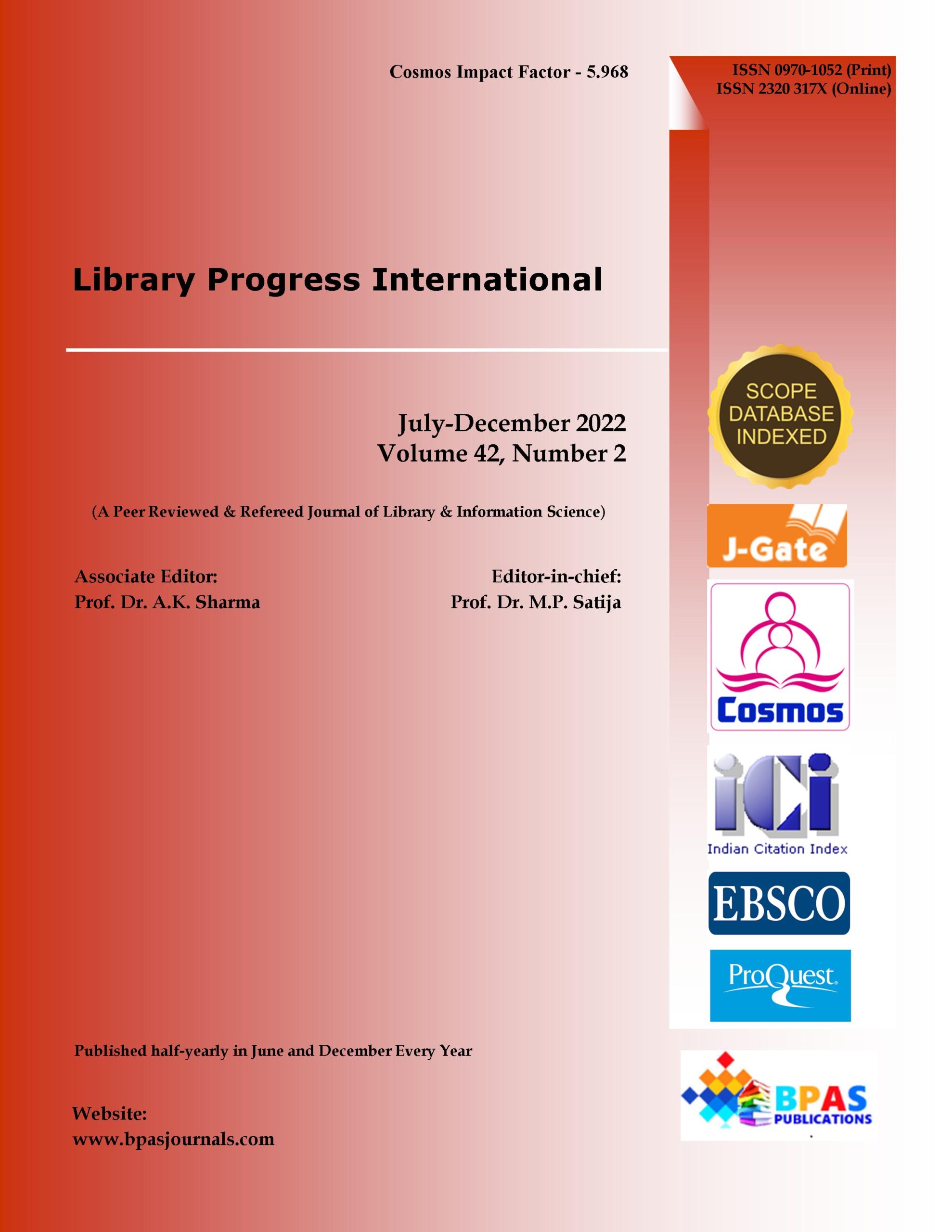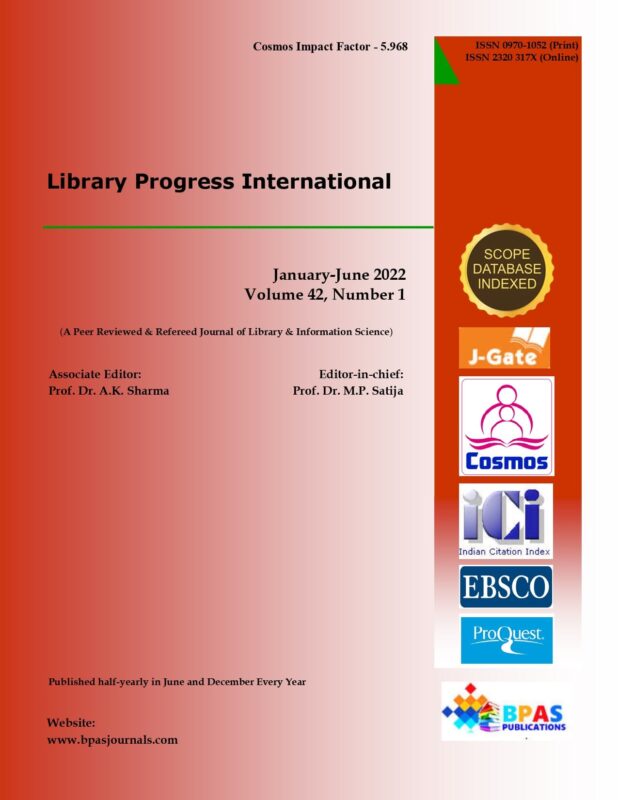Web Citation Analysis on Journal of Travel Research: A Study
9.38$
D. Satyanarayana, Dr. P. Damodar
Library Progress International
Vol.42, No.2, July-December 2022: P.412-420
DOI: 10.5958/2320-317X.2022.00039.3
Original Article
Description
Web Citation Analysis on Journal of Travel Research: A Study
*D. Satyanarayana, **Dr. P. Damodar
Author’s Affiliation:
*Research Scholar, Osmania University, Hyderabad, Telangana 500007, India and Library Asst., Telangana University, Nizamabad, Telangana 503322, India
**Librarian, University College of Engineering, Osmania University, Hyderabad, Telangana 500007, India
Corresponding Author: D. Satyanarayana, Research Scholar, Osmania University, Hyderabad, Telangana 500007, India and Library Asst., Telangana University, Nizamabad, Telangana 503322, India
E-mail: satyamdantala@gmail.com
(Received on 18.08.2022, Revised on 29.09.2022, Accepted on 28.11.2022, Published on 15.12.2022)
How to cite this article: Satyanarayana D., Damodar P. (2022). Web Citation Analysis on Journal of Travel Research: A Study. Library Progress International, 42(2), 412-420.


